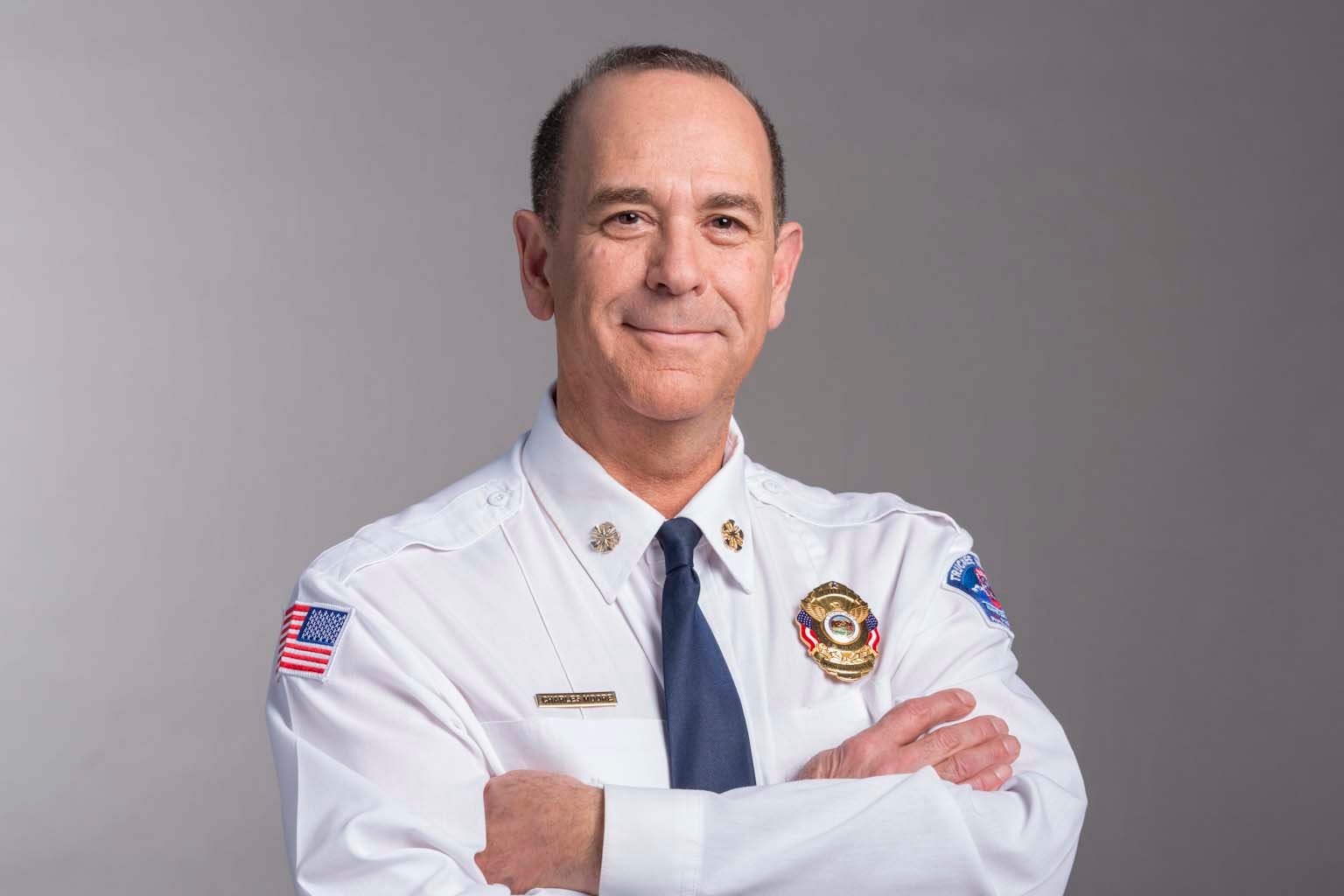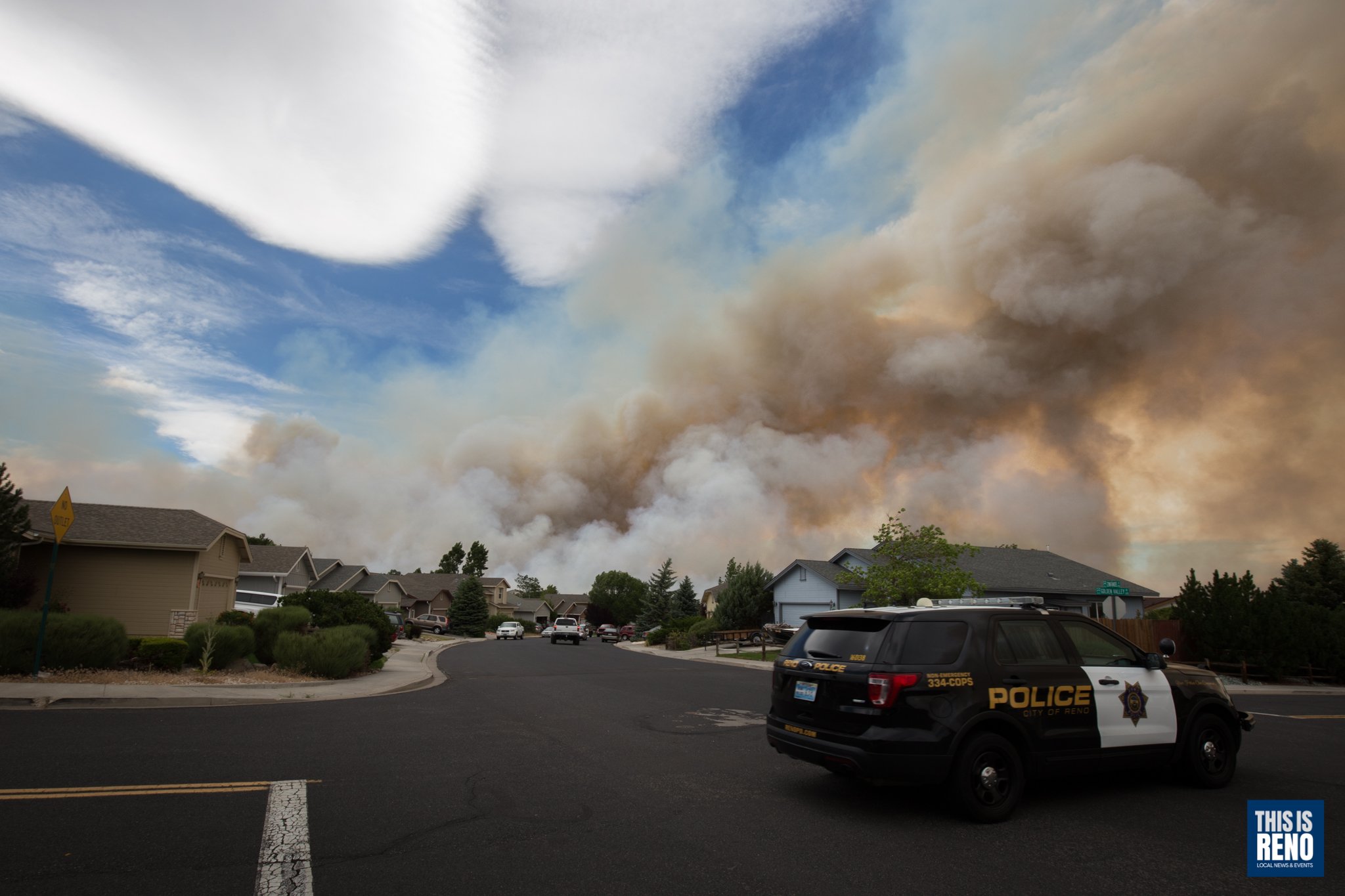Submitted by Chief Charles Moore, Truckee Meadows Fire & Rescue
Wildfires are dangerous and chaotic, especially when they occur in residential areas as we have witnessed in the last few fire seasons.
Viewing an attack on a wildfire is no doubt a fascinating visual. The intricate coordination that air tankers and helicopters perform from the air can be an amazing experience to watch up close. And observing fire engines maneuver into place gives residents comfort that firefighters are on scene.
However, the longer our residents delay evacuation after an order is given, greater are the complications for the firefighting effort.
Conflicts between fire equipment and citizens leaving at the same time is what we want to avoid. For instance, fire hoses, once pressurized, cannot be driven over. Vehicles break the hose which compromises the suppression effort as well as putting firefighters in a dangerous position. Multiple fire engines may also block roadways.

Firefighters must make rapid decisions on where to deploy apparatus and fire hose, along with identifying structures to protect. Our fire crews are focused on coordinating resources in the air, and on the ground. First responders often have little time to follow-up and ensure nearby residents evacuate once announcements are made to leave their homes and neighborhoods.
If we can protect you in place, we will, but the strategy behind fighting wildland fires is much like playing chess. We try to anticipate what is going to happen a few moves down the chess board based on terrain and weather conditions. At times, we may order evacuations that are more extensive than might have been required.
As sometimes happens, if we order evacuations that are greater than might have been necessary, residents may question the necessity of the order. However, if we underestimate and people get trapped by fire, we may have to count foundations, or worse. Therefore, we will always err on the side of safety.
When you receive notification to evacuate, we respectfully ask our residents to follow the order and leave the neighborhood. We recognize the stress and uncertainty that an evacuation can cause our citizens, and we do everything we can to minimize the inconvenience. In most cases, residents can return in a matter of a few hours. Law enforcement will also provide a significant presence to safeguard your homes.
Citizens should know how to respond to wildfire or any disaster that could occur in your area – weather events, flooding, or man-made disasters. Prepare to be self-sufficient for at least three days. This may mean providing for your own shelter, first aid, food, water, and sanitation. Make plans with your family and friends in case you’re not together during an emergency. Discuss how you’ll contact each other, where you’ll meet, and what you’ll do in different situations. Check all types of media – internet, newspapers, radio, TV – for local information and updates.
The fall is especially a critical time to prepare because fuels are drying out and wind events can be intense.

Charles A. Moore is Fire Chief for Truckee Meadows Fire Protection District since 2012. 2022 marks his 42nd year in the fire service. Chief Moore began his career as a volunteer firefighter and started his professional career in 1981. He has held every position in the fire service – from firefighter, driver/operator, lieutenant, captain and fire marshal.
Submitted opinions do not necessarily reflect the views of This Is Reno. Have something to say? Submit an opinion article or letter to the editor here.

